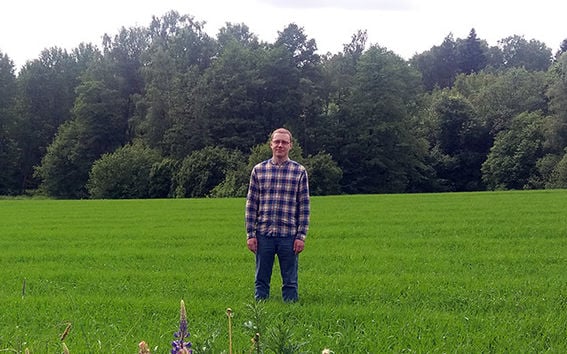Machine learning to increase efficiency of farming by predicting the interaction between the plant and environment

Tekes has granted approximately 0.5 million euros to an Aalto University pilot project aiming at developing machine learning methods that will tackle the challenges facing agriculture. The project will finish by the end of 2018.
Machine learning has rarely been applied to the challenges in primary production. However, it has been estimated that as the human population grows, in 2050 the demand for food will exceed supply by 60 %. Climate change will cause significant additional challenges and improving the efficiency of primary production is necessity for food security in general.
'Machine learning methods originally developed for personalised medicine here at Aalto University in Professor Samuel Kaski's research group will be used to solve challenges of primary production. The prediction problems related to the two domains are very similar”, describes principal investigator Jussi Gillberg.
The pilot phase will include further methodological development. The methods will be used in the area of traditional arable farming to identify those plant varieties that are best suited for each field. In greenhouse cultivation the methods will be used to adjust the greenhouse conditions for optimal growth. In addition to these, more accurate prediction instruments will be developed for plant breeders.
Efficient and predictable cultivation
'Machine learning will be used to determine the efficient use for each field and find the best crops for the local environment. This is a matter of predicting the interaction between the plant and its environment. A crop variety that produces higher yields on a certain field can be inferior to other varieties elsewhere,' Gillberg adds.
‘The most important factor in the cultivation of plants is the combined effect of the genotype, the genetic makeup of a plant, and the plant's surrounding environment. In the best case scenario, the methods and practices created in the project can be used to predict the success of plant breeding material in new conditions,' describes Director of Plant Breeding Merja Veteläinen from Boreal Plant Breeding.
The project's business partners include Boreal Plant Breeding Ltd, Mtech Digital Solutions Oy as well as Netled Oy, which is specialised in effective greenhouses. In co-operation with business partners, the project will examine the different options for commercialising the developed technology. The project will also include cooperation with Natural Resources Institute Finland.
Further information:
Jussi Gillberg
Doctoral Candidate
Aalto University
[email protected]
Read more news

Get to know us: Associate Professor Maria Sammalkorpi
Sammalkorpi received her doctorate from Helsinki University of Technology 2004. After her defence, she has worked as a researcher at the Universities of Princeton, Yale and Aalto.
Aalto computer scientists in ICML 2024
Computer scientists in ICML 2024
Getting bacteria into line
Physicists use magnetic fields to manipulate bacterial behaviour